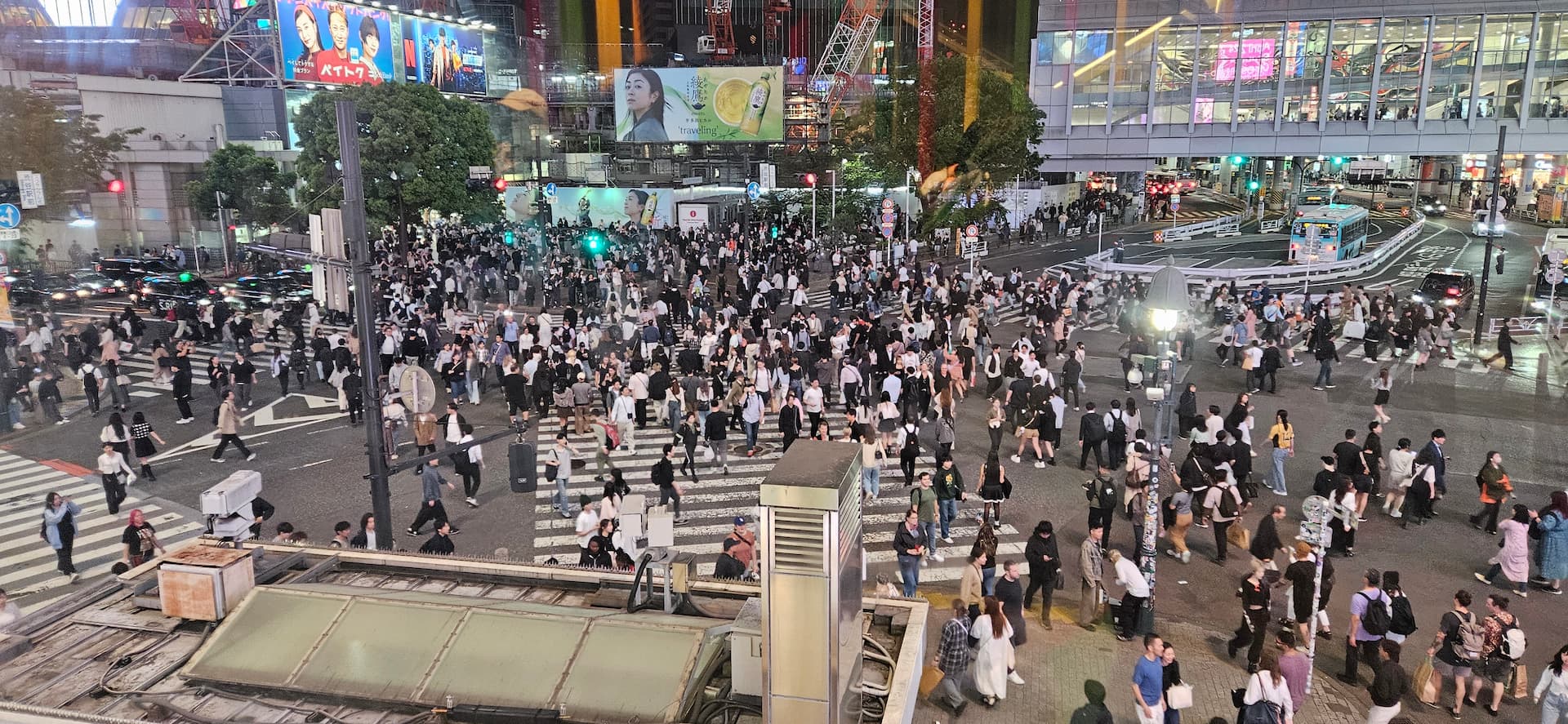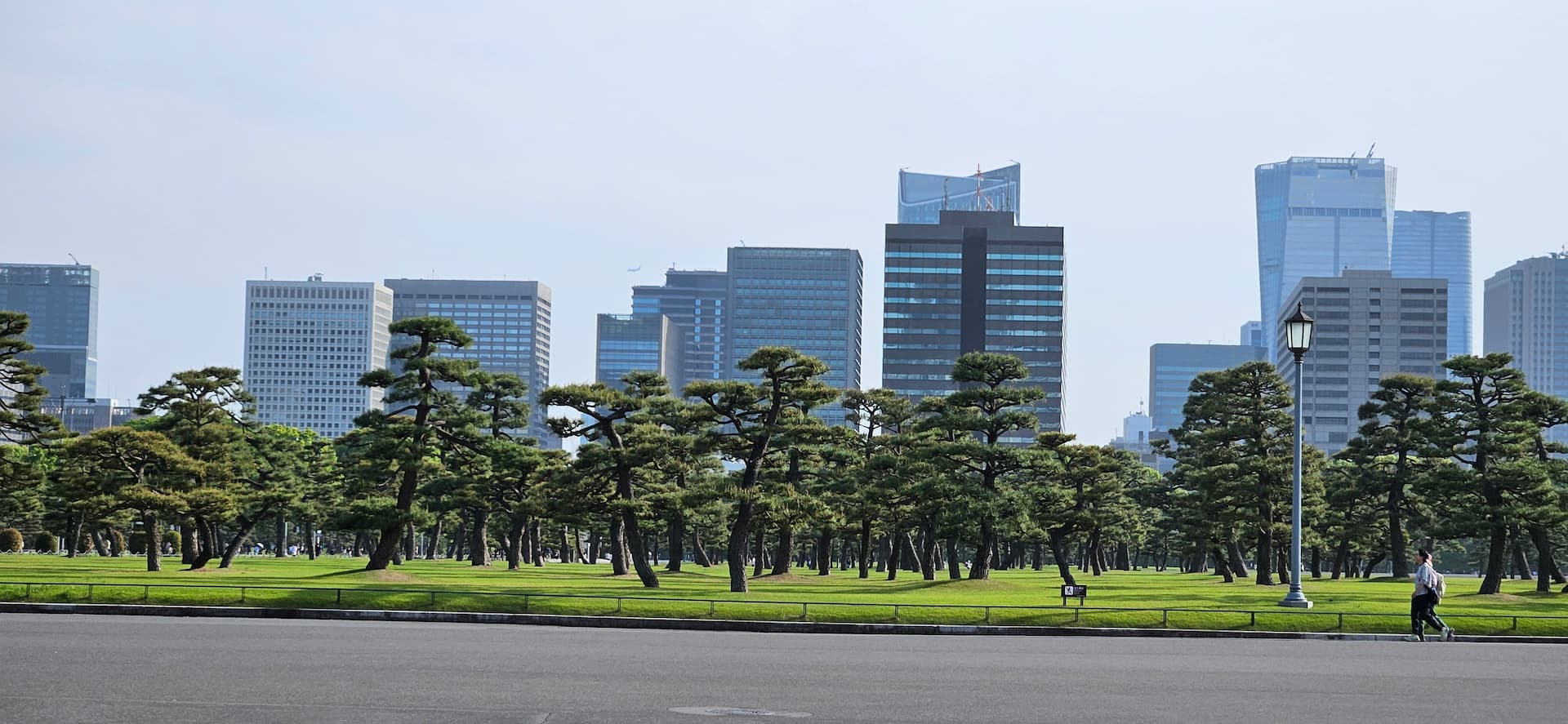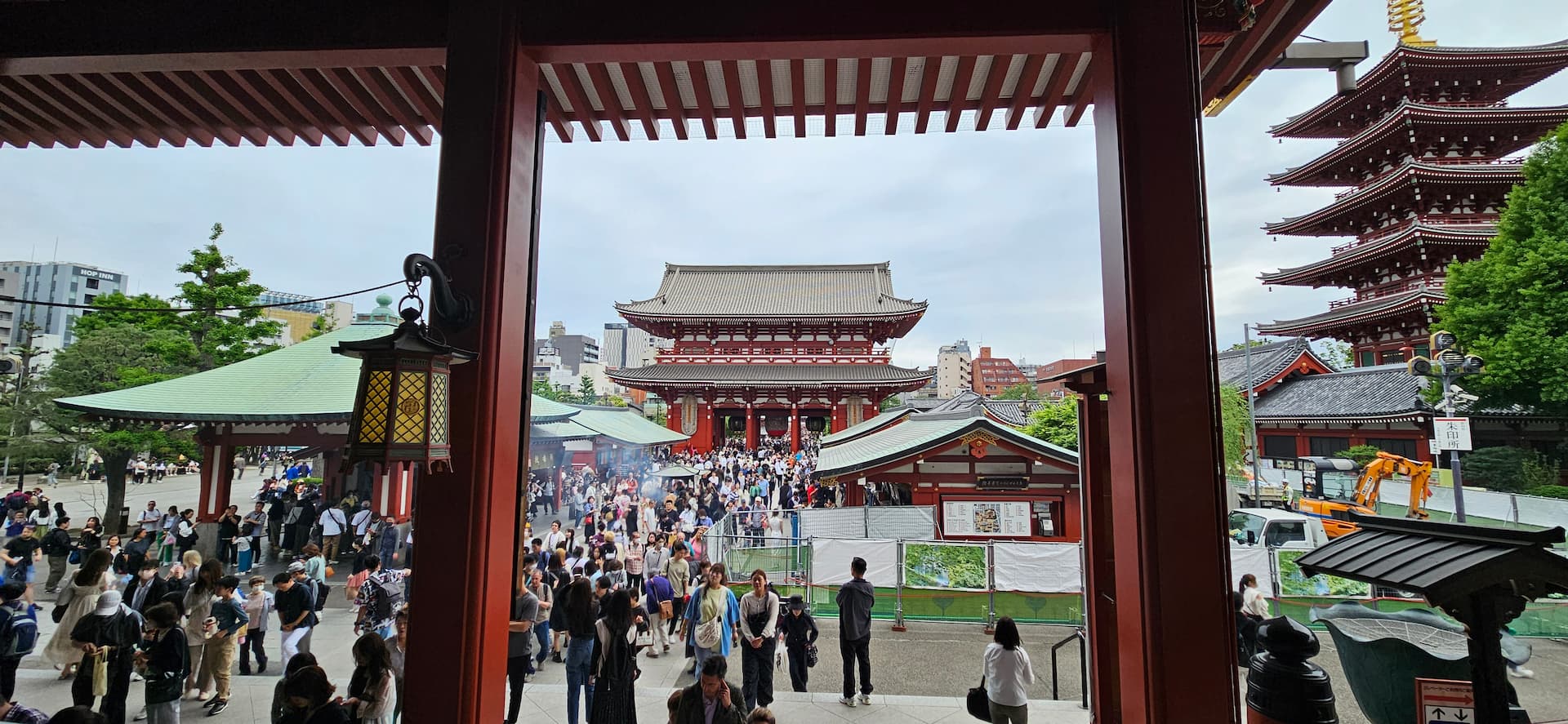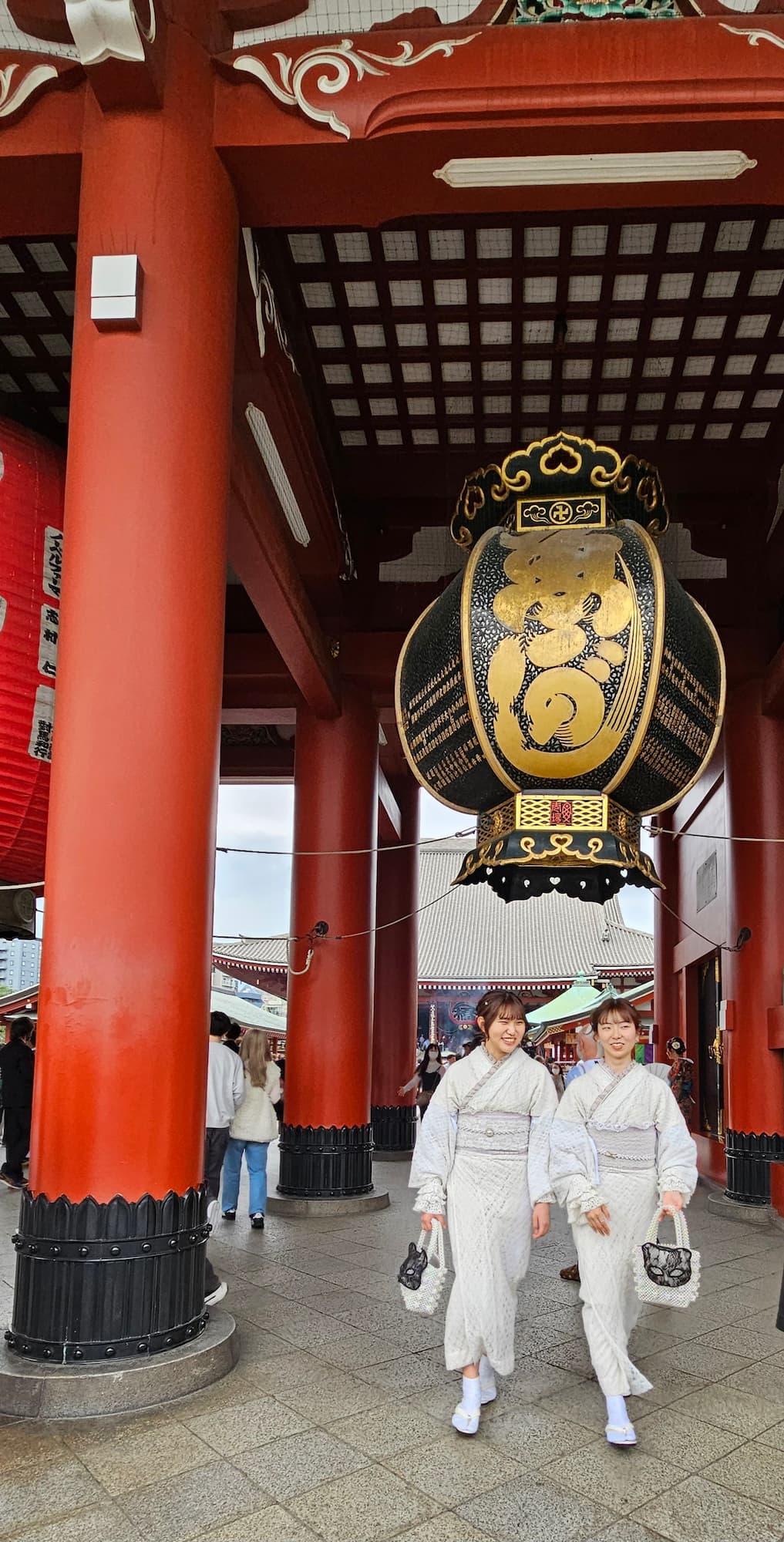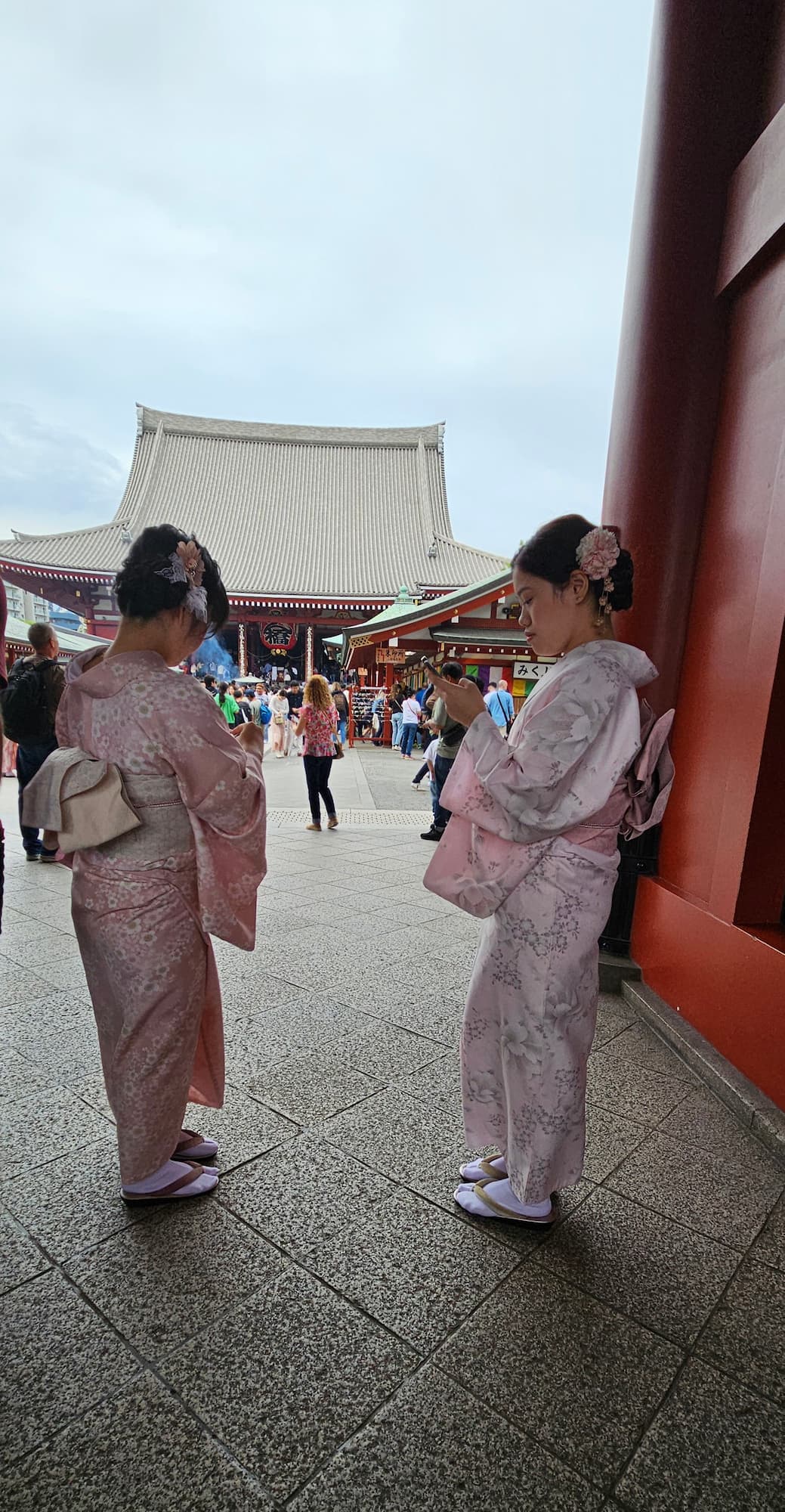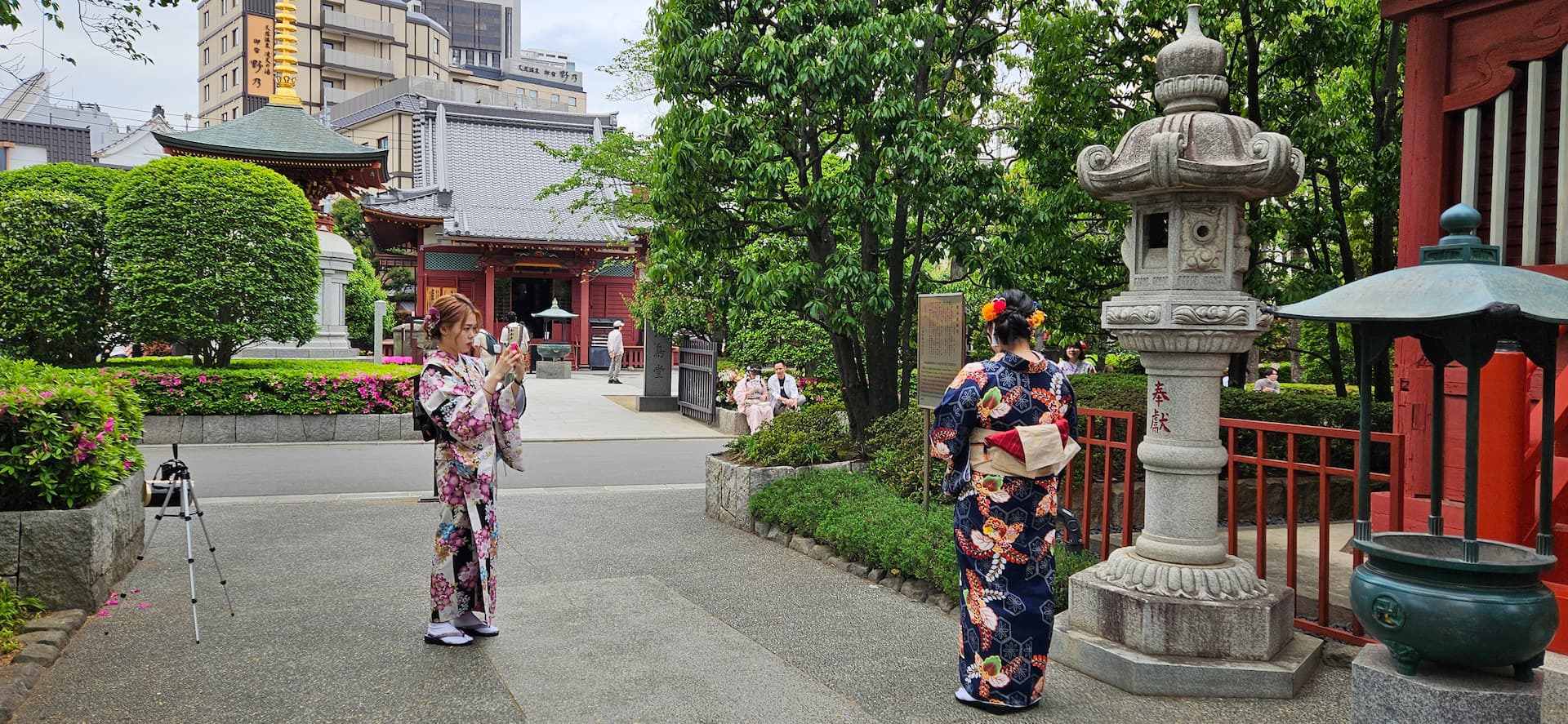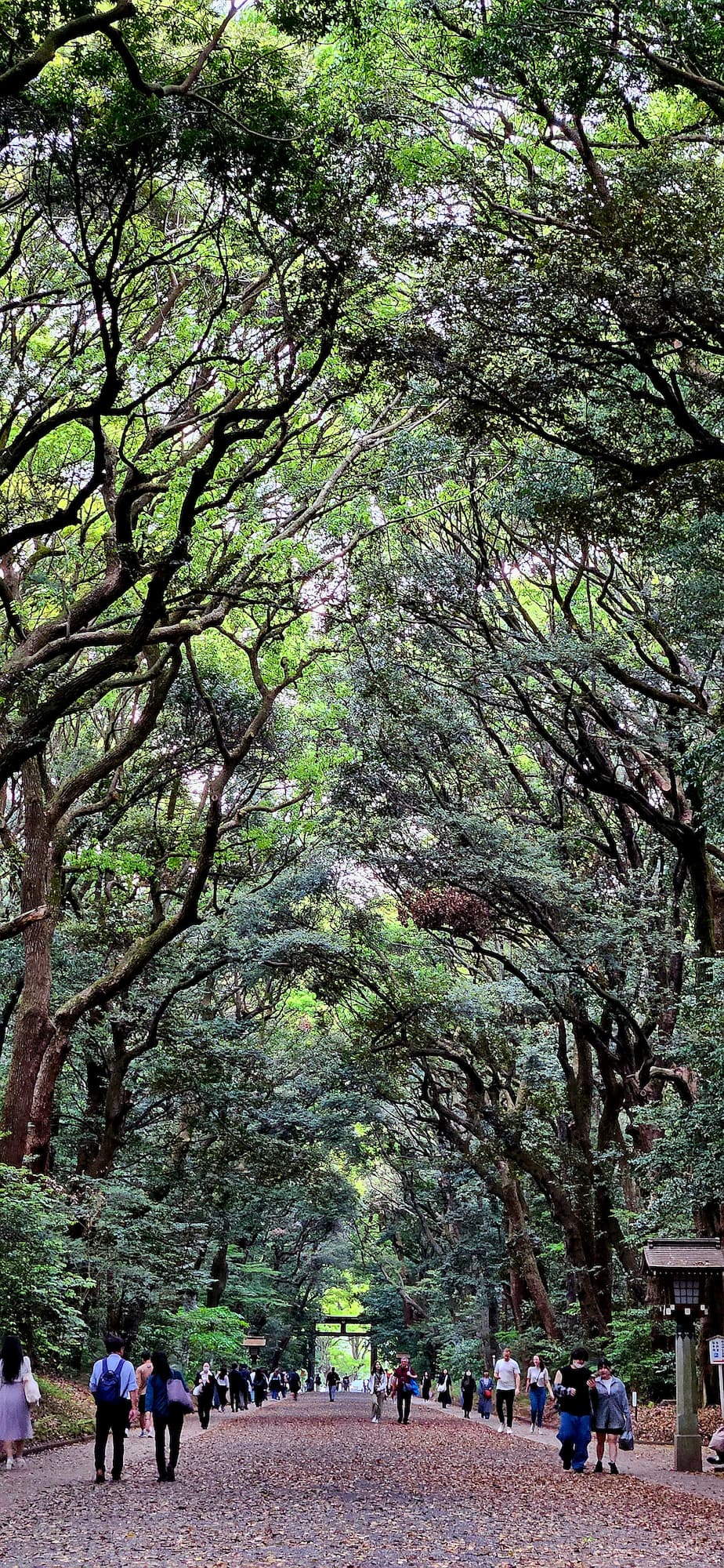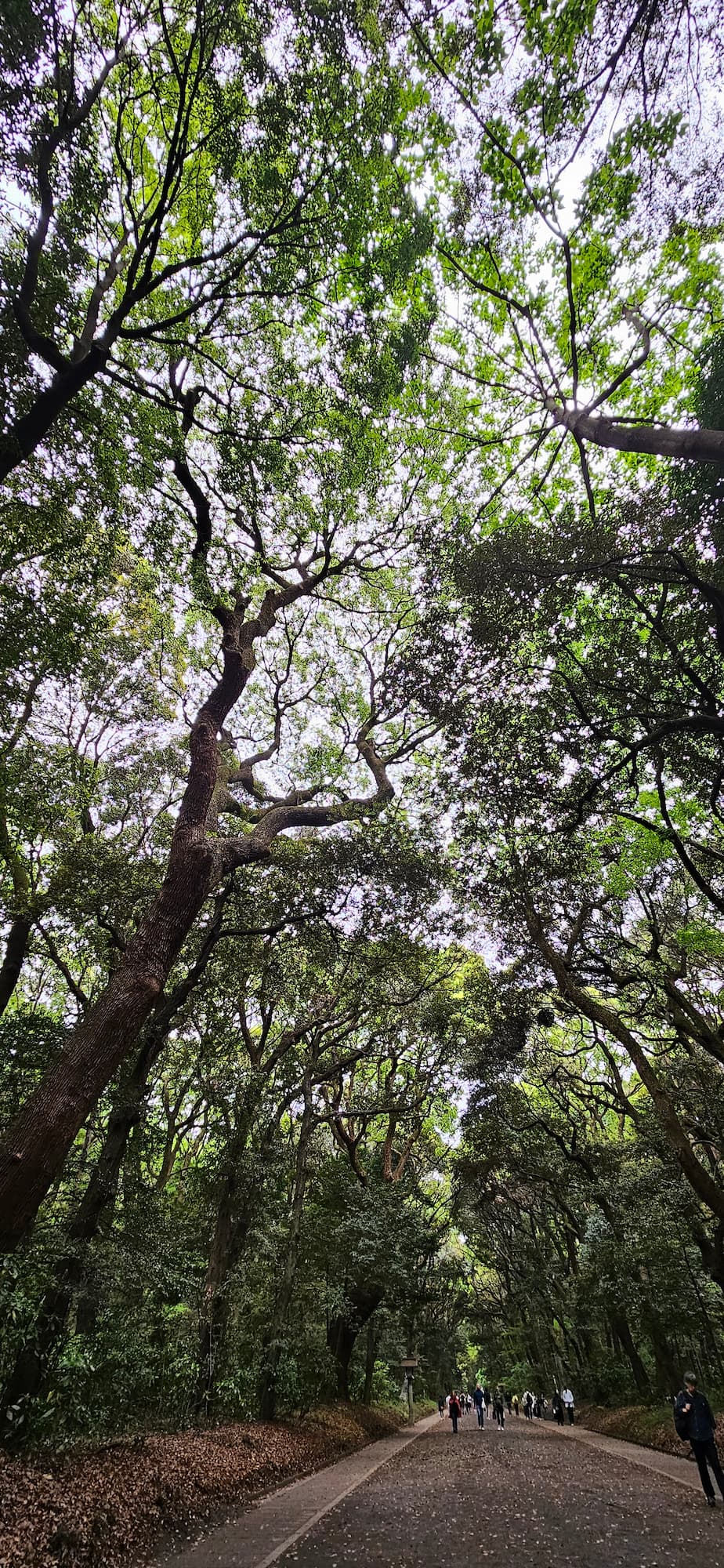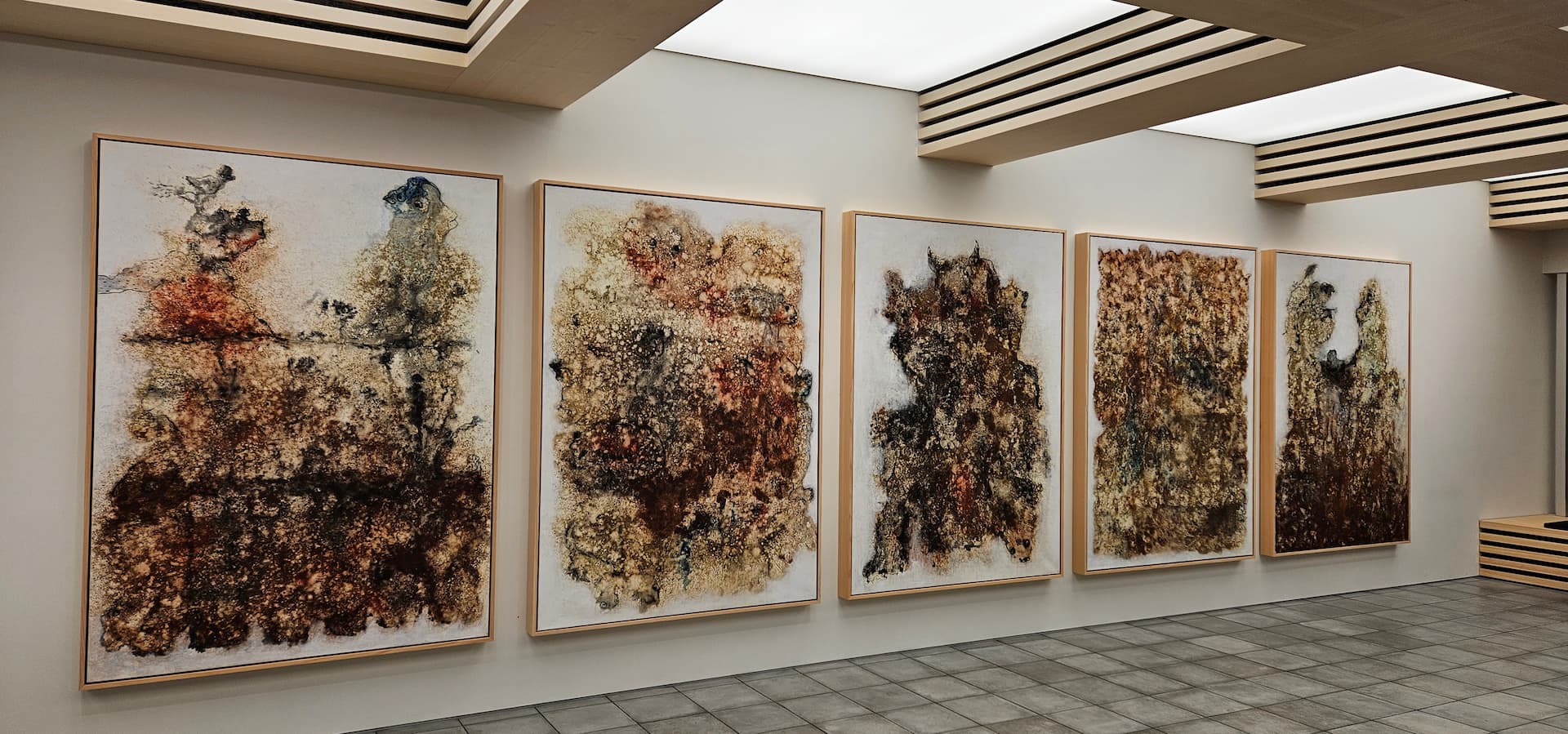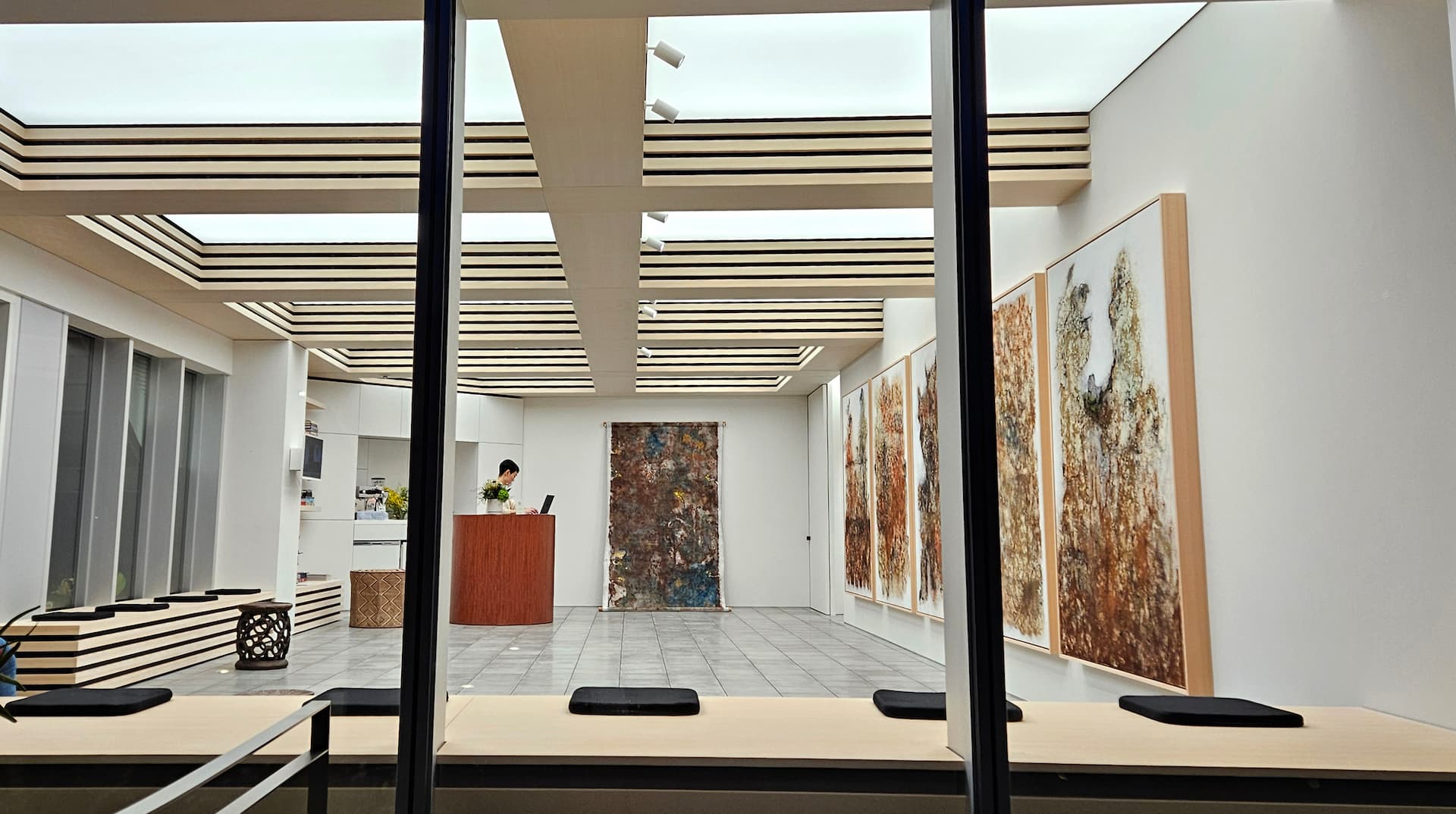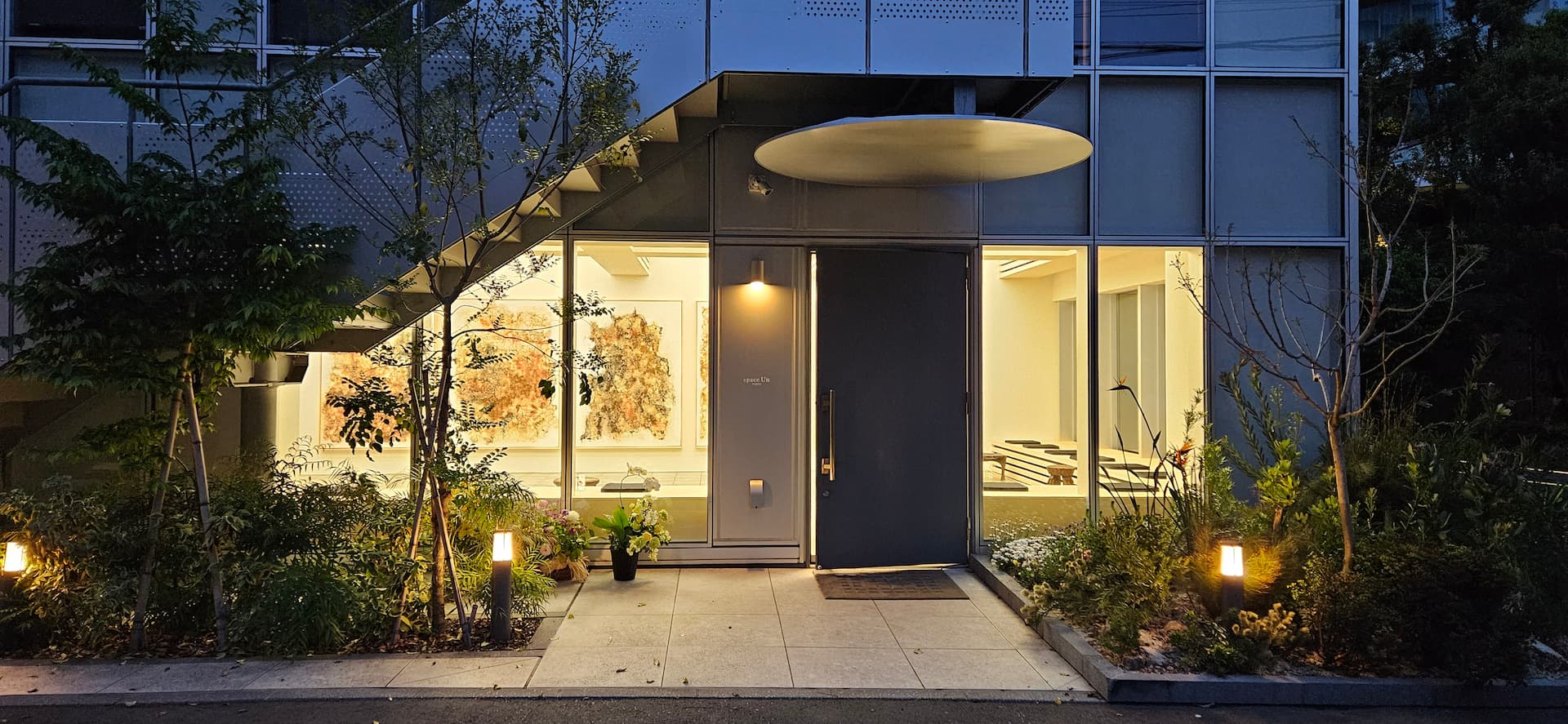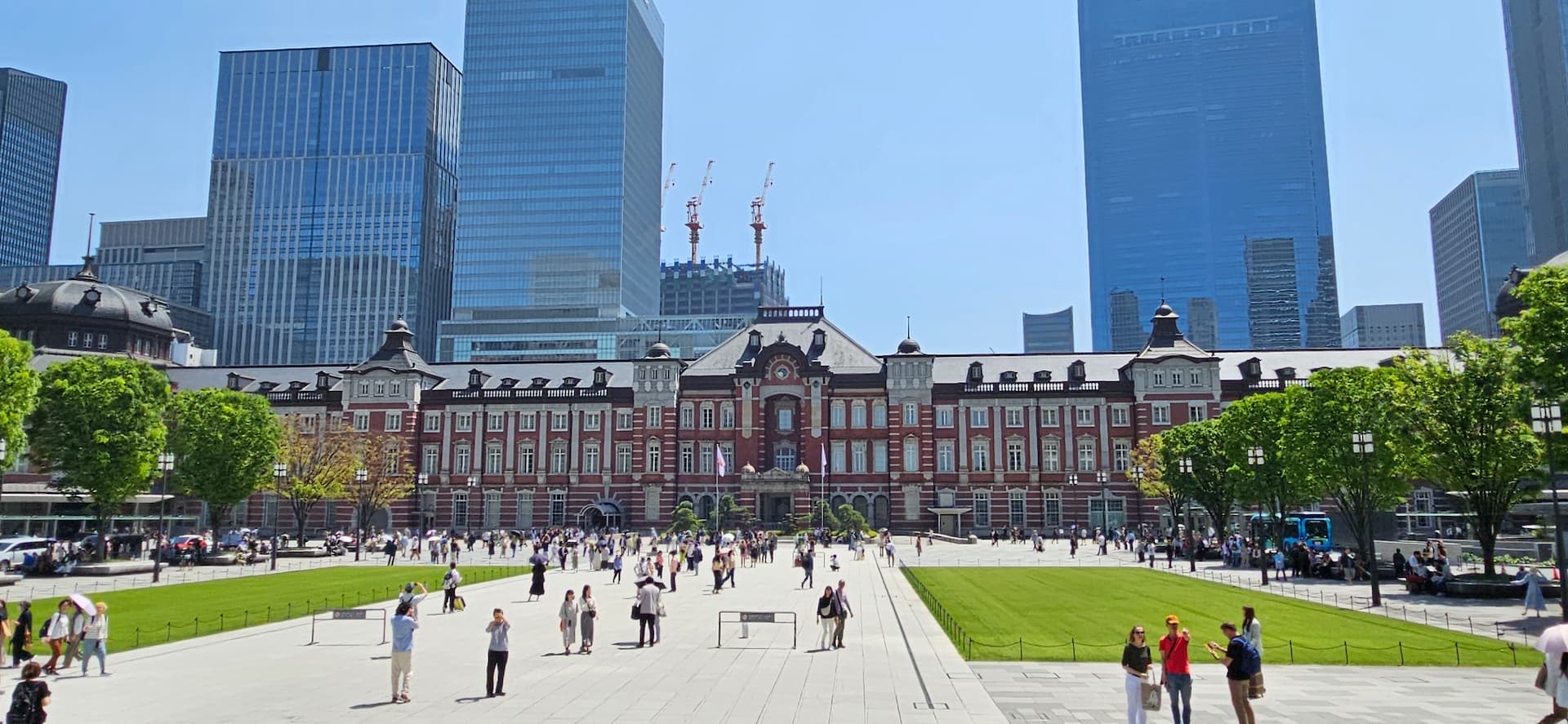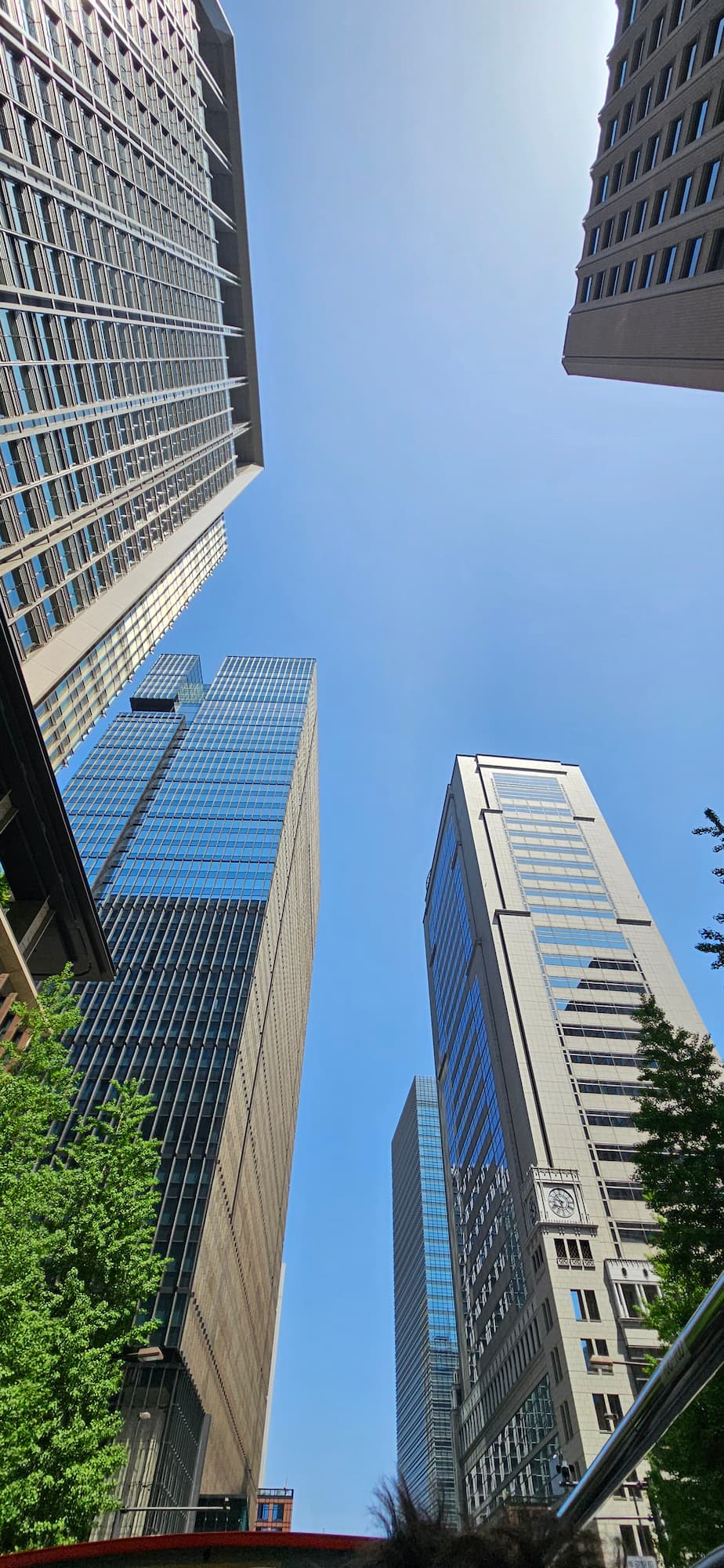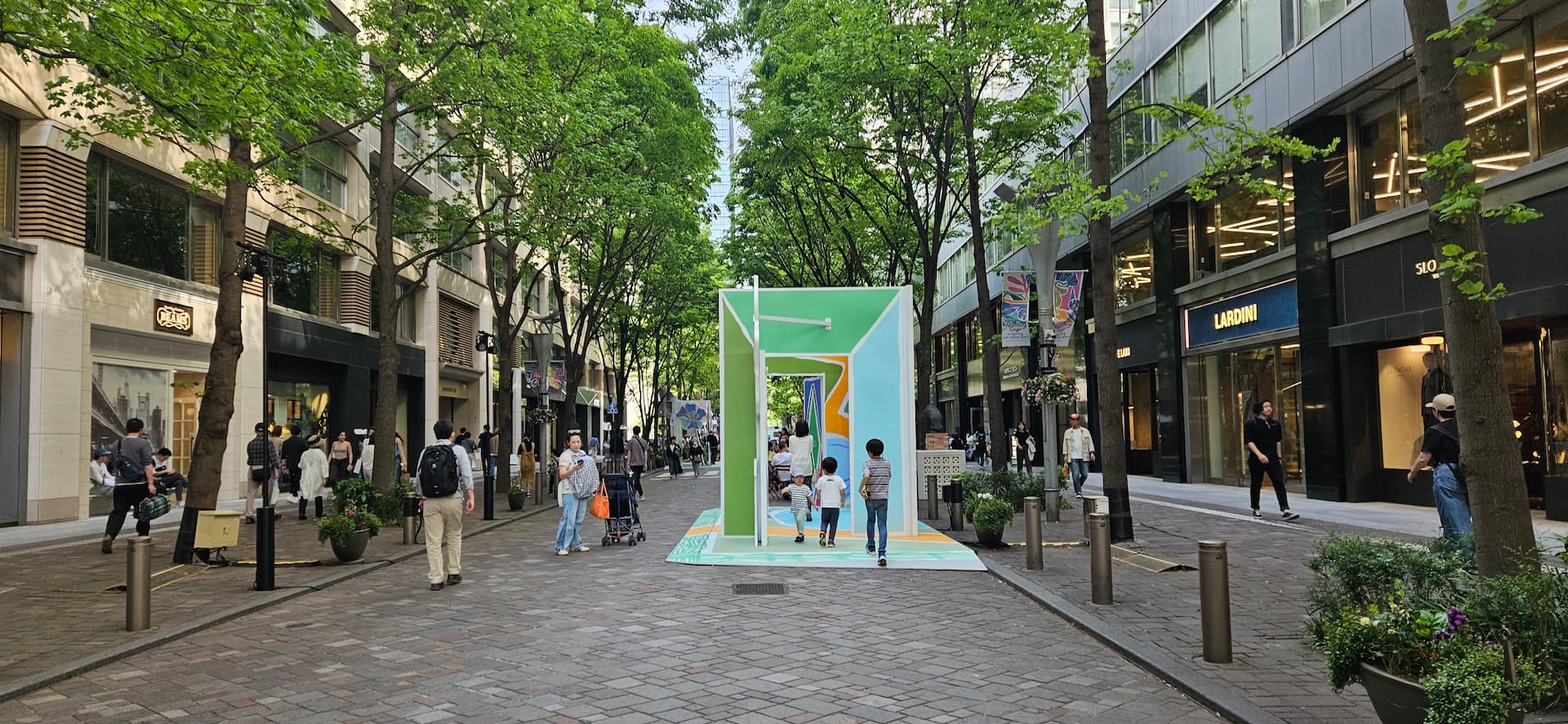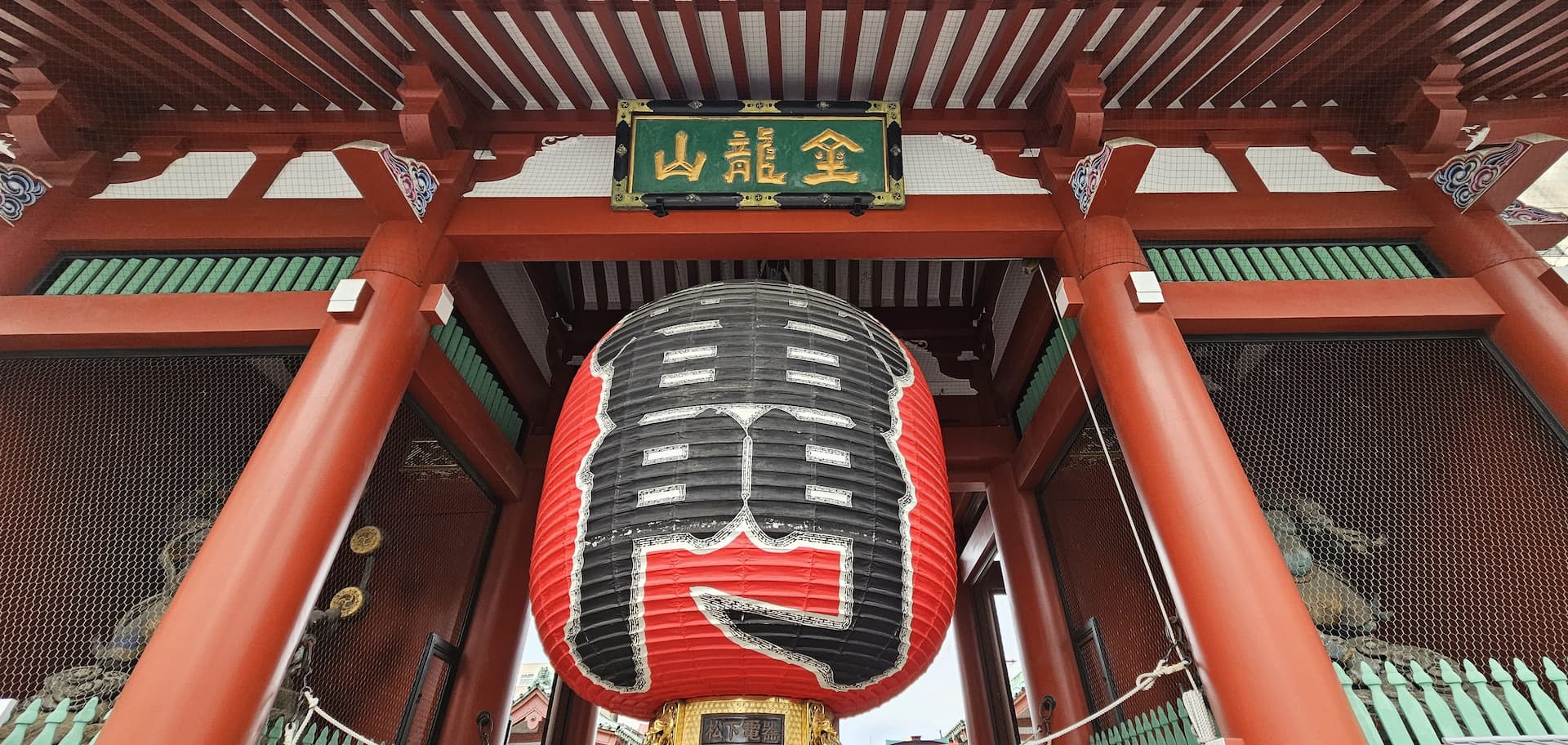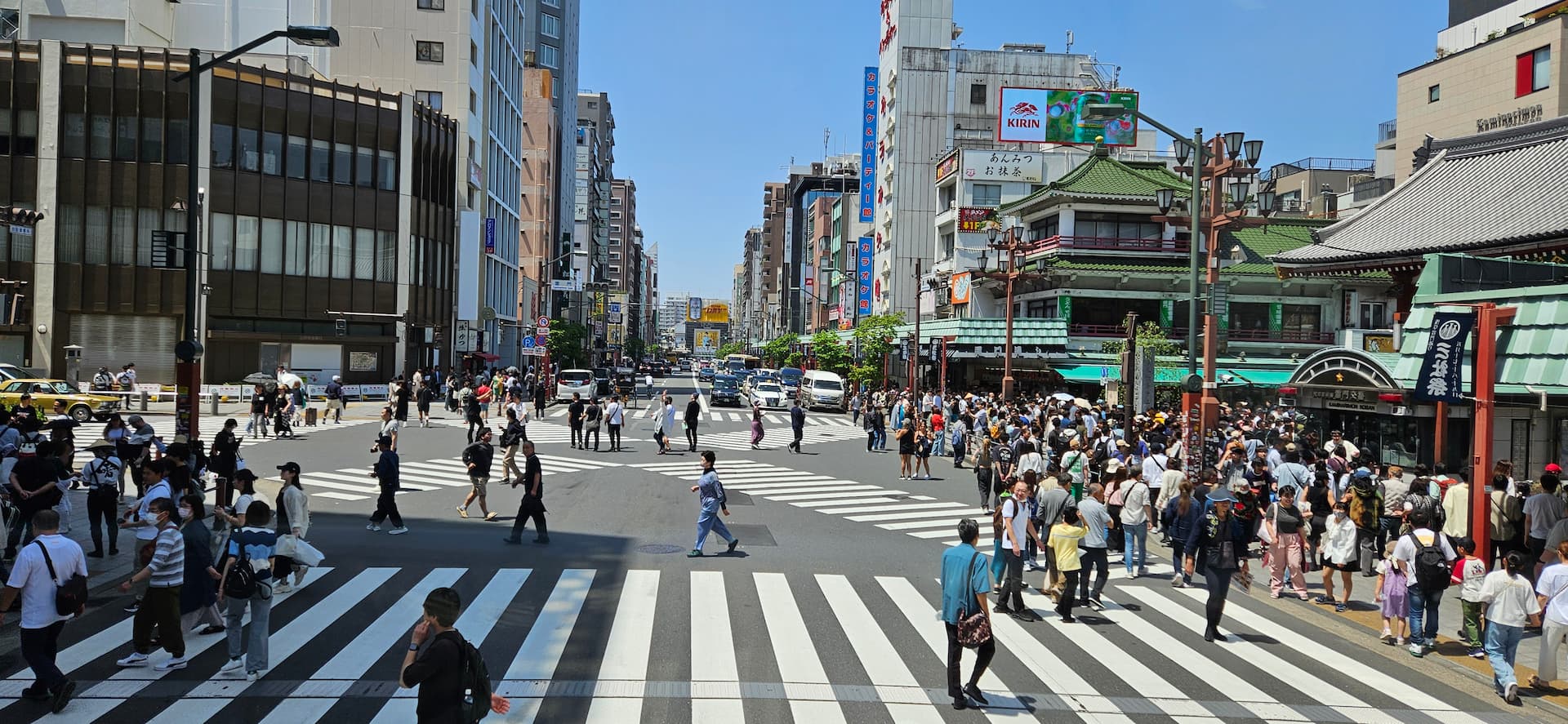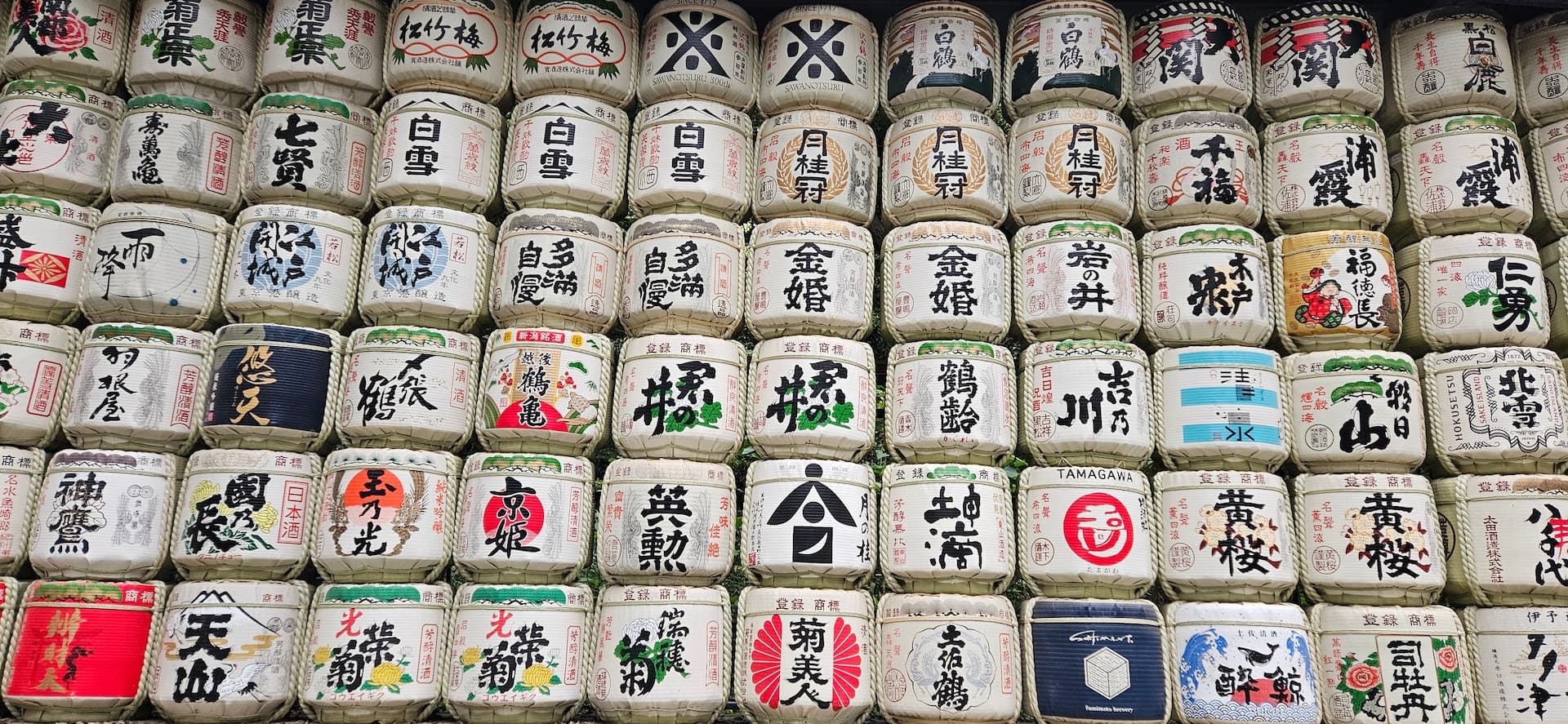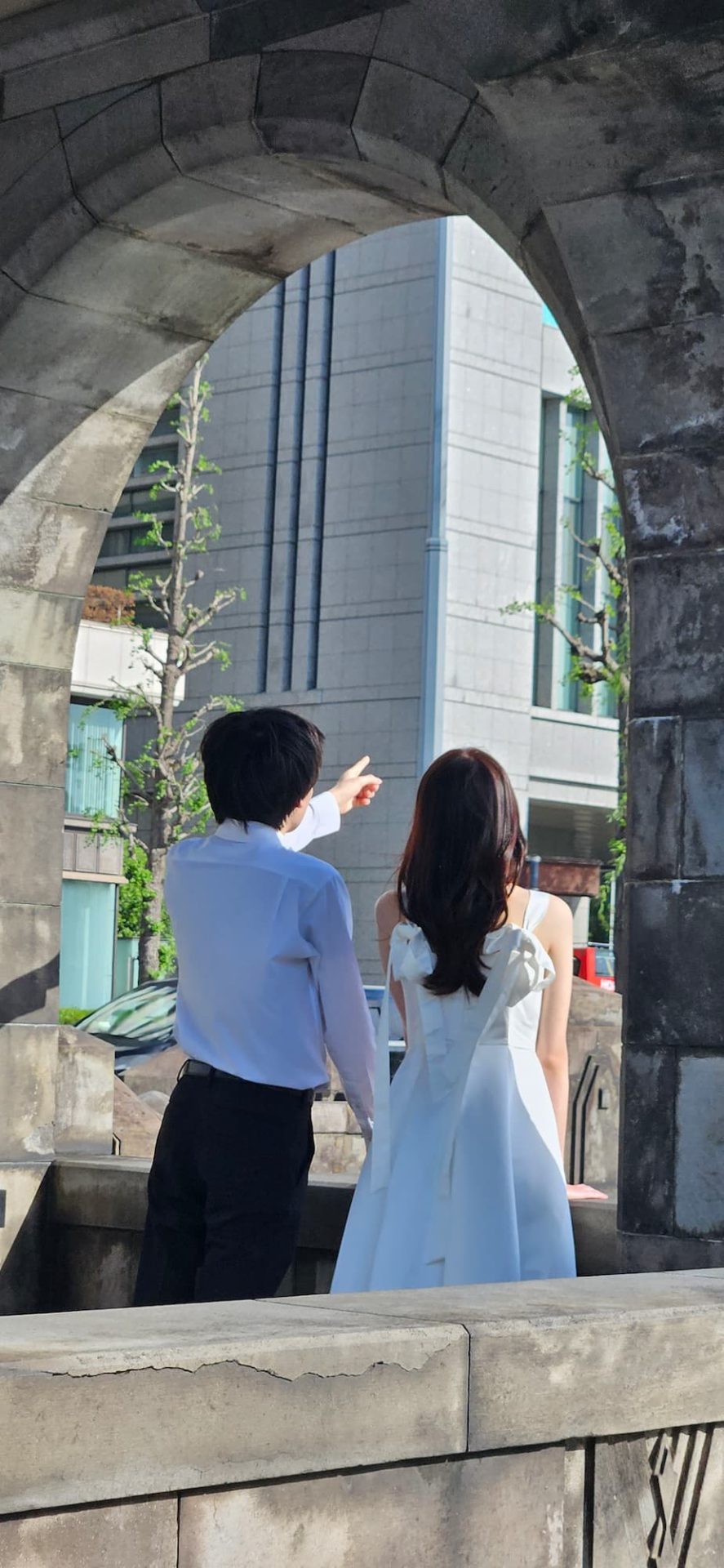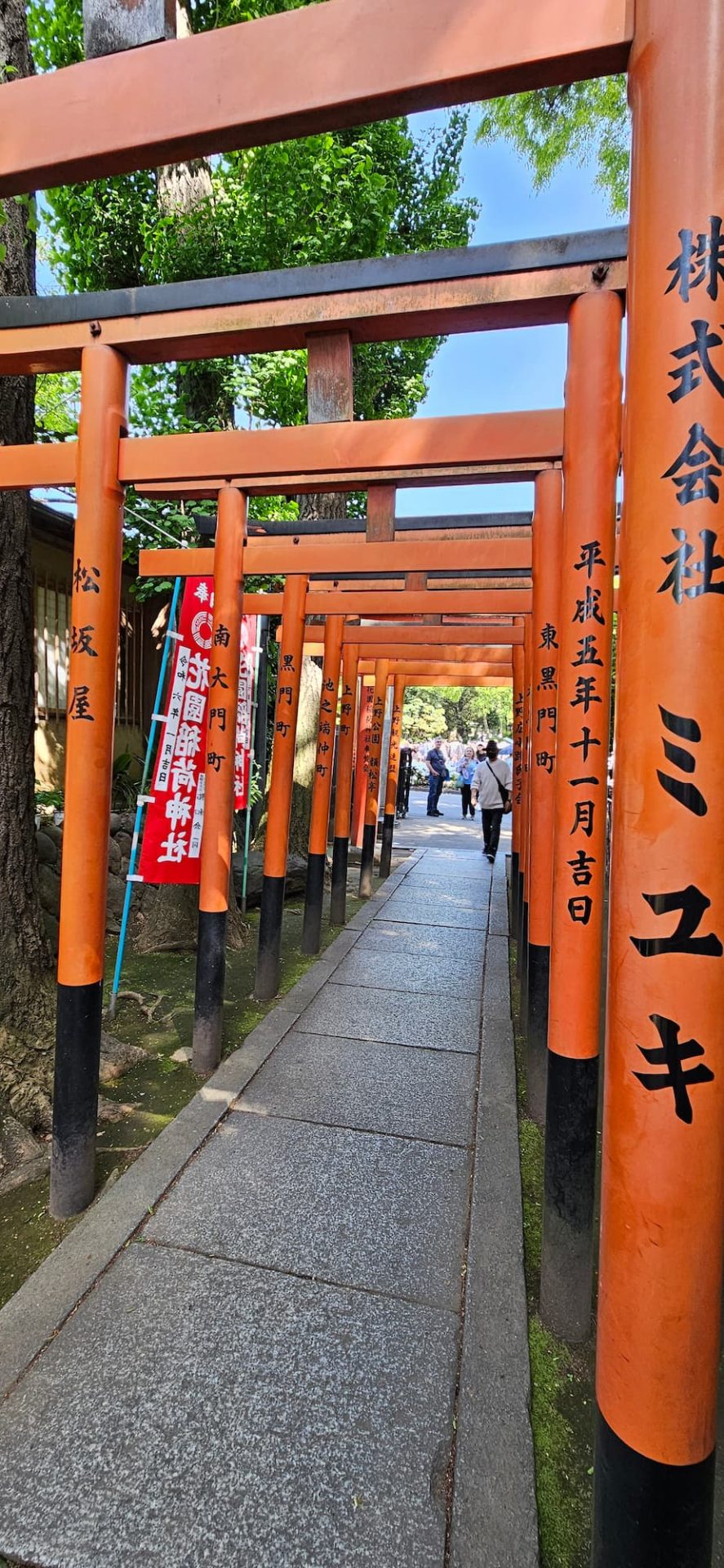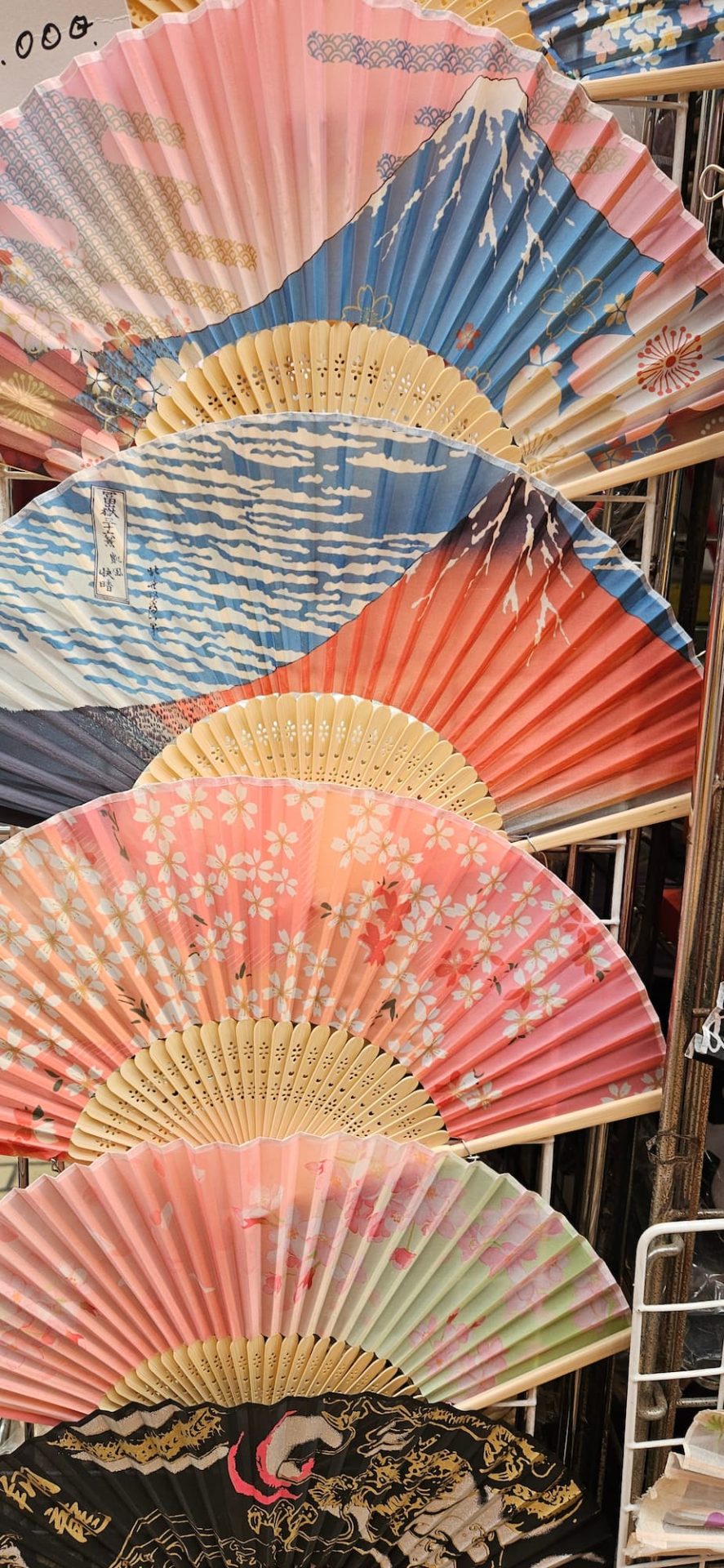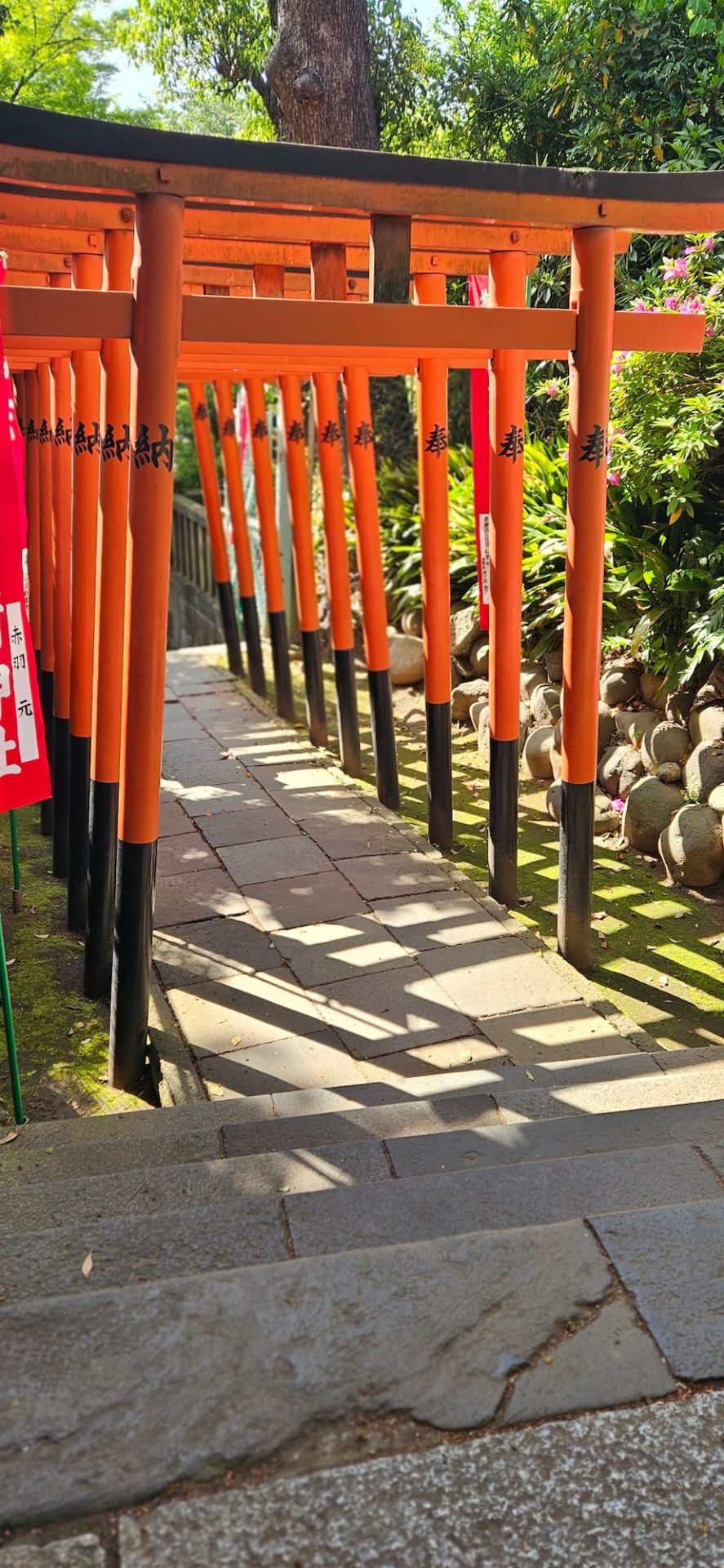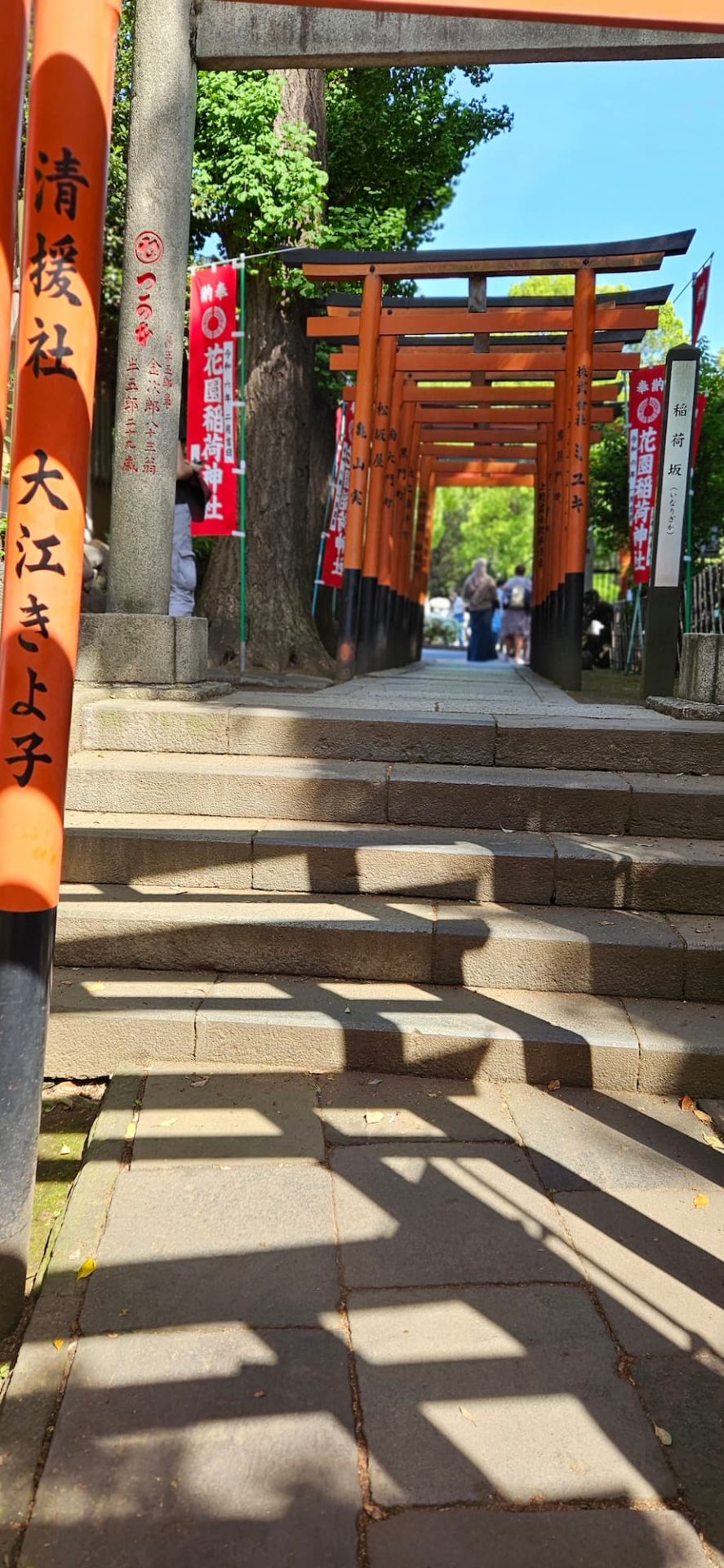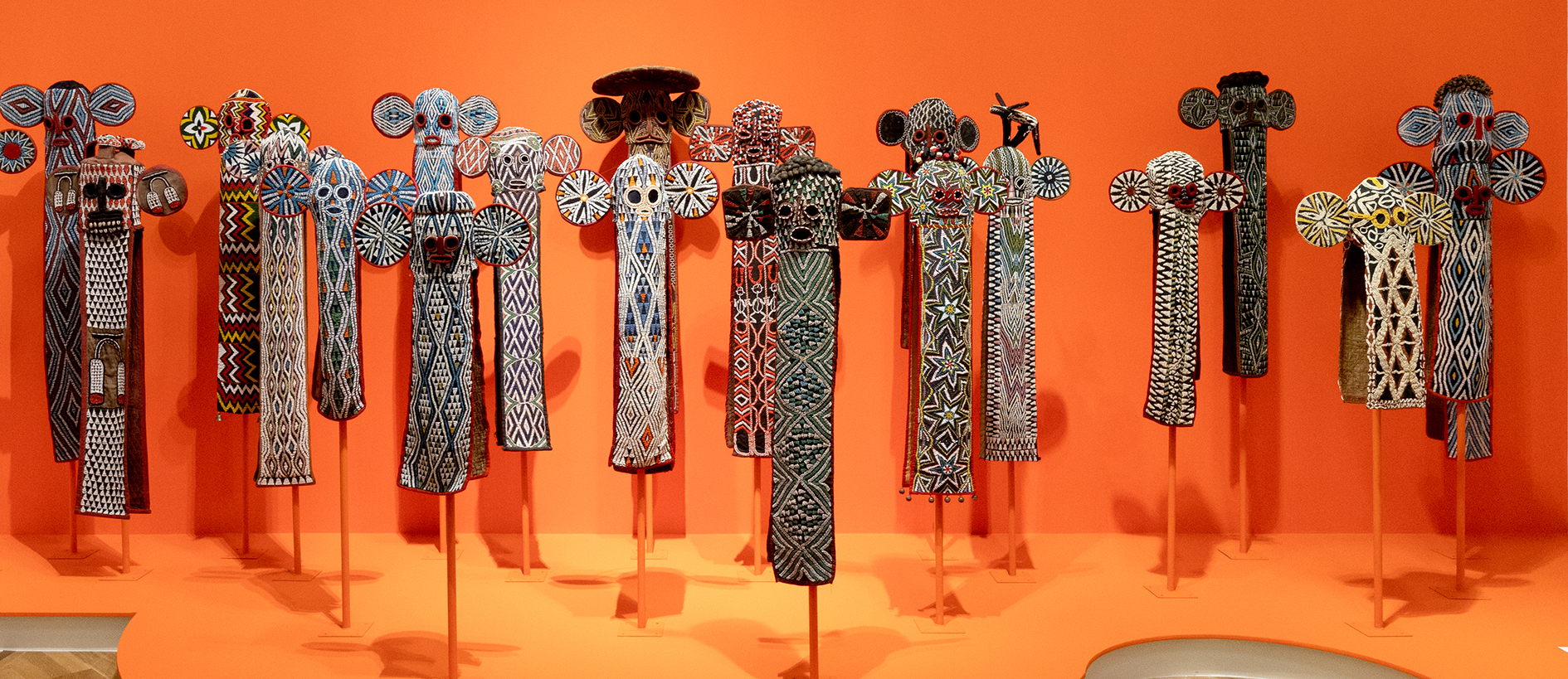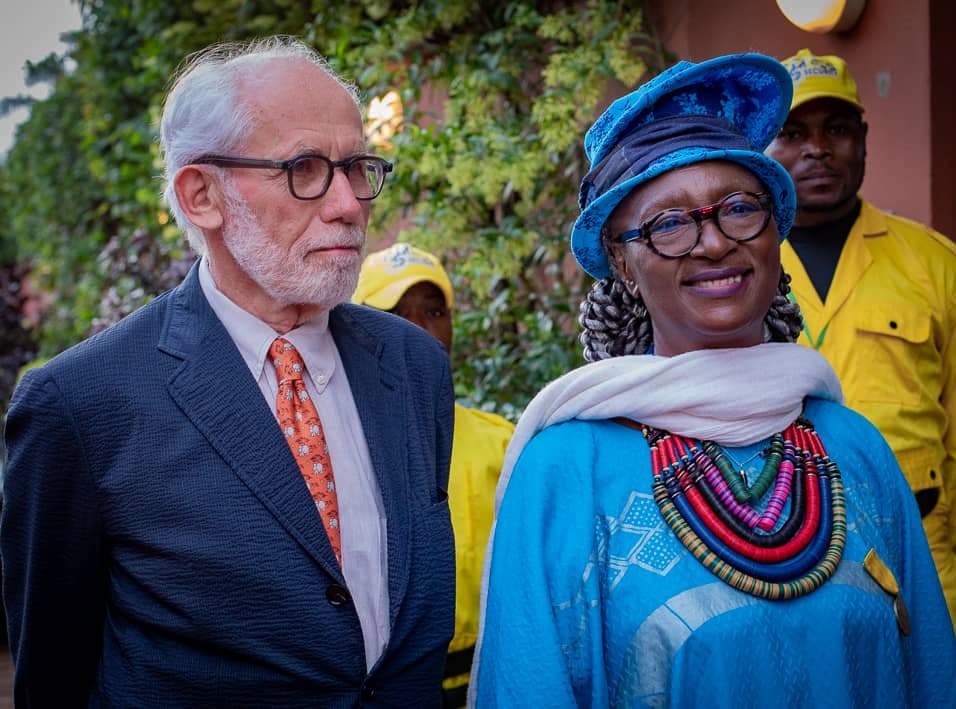Tokyo and its first African art gallery
In the middle of a sidewalk in the crowded Shibuya neighbourhood, a young woman is kneeling on the asphalt. She is holding a paintbrush while in front of her lies a large white rice paper. With calm, broad, careful strokes, she is sketching out ideograms. She pauses to check her calligraphy, then moves on to the next. Her gestures are natural and serene. It seems like time has slowed down in her bubble while passers-by are hurrying past her.
This is Tokyo, a concrete jungle that nestles its soul deep within. A graceful, tender and passionate soul charging itself with new meanings by the second. You can find it while picnicking under a sakura tree, navigating the overcrowded streets, catching a glimpse of the Fuji-san mountain from the dizzying heights of the Sky Tree, or lighting a candle at a sacred Shinto shrine.
They all embrace you protectively and give you a unique range of challenges. The city is teeming with learning opportunities, humbling allowing one to find peace despite the ever-moving masses of this bustling place. This is the essence of Tokyo.
Tokyo is one of the most thrilling cities in the world, and it is more lively and energetic than any other metropolis on the globe. It was love at first sight, an unconditional and enduring feeling that lights up my heart even now that I know my way around, almost like a local. I wish I could still be a first-time visitor to Japan’s capital to experience the overwhelming emotions and surprises this city offers. Even on my tenth visit, the joy of seeing it is just as powerful.
It’s worth getting lost in Tokyo because its streets are a spectacle. A seamless blend of millennia-old Japanese traditions and state-of-the-art technology, thousands upon thousands of nooks and crannies to explore. At every step, you’ll find a temple, a garden, a skyscraper, a hypnotic pedestrian crossing where people zig-zag like free electrons, ladies dressed in Shogunate-era kimonos, or teenage girls looking like anime characters. Sometimes, everything is so futuristic that it feels like you boarded a spaceship to a distant planet. Other times, you expect samurais to barge in and disturb the tranquil patches of nature.
Don’t be afraid of this urban maze/labyrinth. The city is one of the safest in the world. Someone will always help you with explanations or directions and sometimes even drive you where you need to go. Japanese are kind and polite, always going out of their way to be of service. My favourite spots are the Meiji Shrine, a healing and sacred place, a kimono stall that sells the subtlest silks and brocades, a fruit and vegetable market full of colours and freshness, often crossed by schoolboys wearing anime masks, and this, Tokyo’s first African art gallery.
Space Un is a unique venue for African artists to exhibit and a platform through which they can penetrate the historically hermetic Japanese society. It’s a bridge between two poles that meet in Art and their common love and respect for nature, wisdom and beauty.
Located in Tokyo’s Aoyama district, the gallery offers residency for African artists to forge new works in a gorgeous setting that encourages introspection, reverie, and creation. The dense, tactile works of artist Aliou Diack’s “Anastomosis” series were born here. Two different countries (Japan and Senegal) united through the poetry of his paintings, a hymn dedicated to Mother Earth, also revered in Japan, a quintessence of the creed and manifesto of Space UN gallery.
Its second exhibition, The Warrior Journey, is of Delphine Diallo. Through her photographs and collages, the young artist explores the dual relationship between man and nature, both external and internal. It is an introspection filtered through discipline, honour, harmony, and all that derives from samurai philosophy.
A Very Brief History of Tokyo
Today, Tokyo is the largest city in the world, with nearly 40 million inhabitants. A millennium ago, this was the site of a tiny fishing village called Edo (estuary), fortified in the 12th century AD.
In 1720, more than a million people lived in the Edo Fortress, enormous for that time. Emperor Meiji moved the capital from Kyoto to Edo in 1868 and renamed it Tokyo (the “eastern capital”).
In 1923, a devastating earthquake levelled half of the city, and in World War II, US air raids destroyed much of what was left.
Today, Tokyo is a modern, young and vibrant city, with a surprising mix of architectural volumes that are sometimes hard to accept but always breathtaking. It’s a major financial, technological and cultural centre and a world leader in fashion and entertainment. Tokyo is also the world’s gastronomic gold standard, with twice as many Michelin stars as its nearest rival, Paris.
